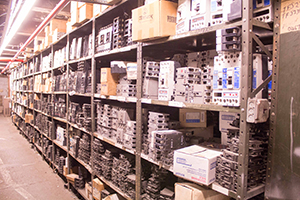One of the most important components of an electrical circuit is a circuit breaker. It is an automated electrical switch that ensures that the electric circuit is not damaged through overloading or a short circuit. A circuit breaker does this by interrupting electricity flow when a problem is detected. It is not to be confused with a fuse which must be replaced once is blows. Circuit breakers can be manually or automatically reset and they will continue functioning.
Different sizes, different functions
There are circuit breakers of different sizes voltages and amperages. There are the small ones to protect different individual household appliances and there are large ones that are made to protect high volume voltage circuit such as those that serve a whole city. All circuit breakers have some features that are common. However, they also have some differences based on their voltage class, type of circuit breaker and current rating.
How they work
Low voltage circuit breakers will usually detect faults in the breaker enclosure. On the other hand, the high voltage ones typically have protective relay pilot devices that detect faults and that control the trip-opening mechanism.
When a problem is detected, the contacts in the circuit breaker have to open which interrupts the circuit. Mechanically-stored energy in the breaker separates the contacts. However, some of this energy may come from the fault current. Small circuit breakers may be operated manually while larger ones are fitted with solenoids to trip the mechanism and electric motors that restore energy to the springs.
The contacts on a circuit breaker must be able to bear the load current without heating up excessively. They must also be able to take the heat generated on the arc when the circuit is interrupted.
Contacts may be made of copper or its alloys, silver or its alloys or other materials that are highly conductive. The life of contacts is shortened by eroding of the contact material caused by arching when current is being interrupted. Small circuit breakers and those that are in molded cases are discarded once the contact are worn but in high voltage circuit breakers, the contacts can be replaced.
When current is interrupted, an arc is generated. Once generated, the arc has to be contained, cooled and then extinguished in a well controlled manner. This is important to ensure that the gap between the contacts is still able to bear the voltage in the circuit.






